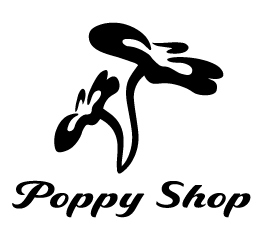Leather Unveiled: A Comprehensive Guide to Terms and Techniques
- DHD
- Dec 17, 2023
- 4 min read

Aniline Leather: Aniline leather gets its name from the dyes used in its production. These colorless, oily dyes are synthetic and derived from coal tar products. Aniline leather showcases a luxurious finish, letting the natural beauty of the hide come through.
Antique: Antique refers to a family of colorants applied to enhance leather hues and create an aged look. It goes beyond just color enhancement, adding depth to carving and stamping for a touch of timeless elegance.
Bonded Leather: In the spectrum of leather quality, bonded leather stands out as a composite material. It's made by blending shredded leather scraps with adhesive and pressing them into sheets. With as little as 20% actual leather content, it's a more affordable option with certain considerations.
Casing: Casing is a pre-stamping and tooling process involving the addition of water to vegetable-tanned leather. It readies the leather for the artisan's touch, allowing for better receptivity to craftsmanship.
Chrome-tan: Chrome-tanned leather is a product of modern techniques, utilizing chromium salts and other agents. This process results in leather that is supple, soft, and offers a varied color palette, reflecting a contemporary approach to achieving vibrant finishes.
Dyes and Stains: Dyes and stains are chemical treatments that transform the color of tanned leather. They penetrate the material, accentuating and permanently altering its color, defining the personality of each leather creation.
Embossed Leather: Embossed leather involves artificially altering the surface with patterns to mimic full-grain leathers like alligator or lizard. It adds textured beauty without compromising authenticity.
Fat Wrinkles: Fat wrinkles, unique to genuine leather, are formed by fat deposits from the animal. They serve as a clear indicator of authenticity, as faux leathers lack these distinctive markings.
Full Grain Leather: At the top of the leather hierarchy, full-grain leather remains untouched and unaltered. With only the hair removed, it displays the natural beauty of the outer layer. Durable and highly sought-after, it stands as a testament to the essence of leather.
Glazed Leather: Glazed leather boasts a smooth, high-gloss finish achieved through polishing with glass or steel under intense pressure. It's a testament to meticulous craftsmanship, demanding attention with its finish.
Grain: The outer part of the hide, known as the grain, showcases natural characteristics like wrinkles, pores, and marks. It serves as the canvas for the artistry of leather.
Hide: A hide is the treated pelt of an animal, ready for human use. Each hide carries the essence of the animal and the potential for exquisite craftsmanship.
Latigo: Latigo is a hybrid leather, combining the characteristics of both chrome-tanned and vegetable-tanned hides. Frequently used in tack, it exemplifies the versatility resulting from a unique tanning process.
Milled: Milled leather takes the spotlight in the quest for softness and relaxation. Tumbled in large machines, it undergoes a transformative journey, emerging with a texture that beckons to be touched.
Nubuck: Nubuck is a delightful detour for top-grain leather. It is brushed to create a soft, fuzzy texture that maintains durability, inviting you to experience a tactile journey through the softer side of leather.
Oil-Tanned Leather: Contrary to expectations, oil-tanned leather involves adding oil to the hide after the tanning process. It tends to be more supple than chrome-tans, well-hydrated, and more resistant to water and dirt.
Patina: Patina is the natural aging process of leather, changing colors and adopting a unique sheen. It adds character and beauty over time, turning each piece into a living artifact.
Pull-Up Leather: Pull-up leather is treated with oils, waxes, and dyes, revealing its magic when stretched or pulled. It creates a fascinating interplay of color and texture, a visual symphony triggered by movement.
Rawhide: Rawhide is a type of leather that has not been tanned but preserved, serving as a raw, untreated canvas for leather.
Shearling: Shearling is a type of hair-on hide from freshly shorn sheep or lamb, bringing a touch of warmth and comfort to the world of natural luxury.
Skive: Skiving is the act of thinning leather in specific areas to achieve the desired thickness, showcasing mastery in the art of leather manipulation.
Split-Grain Leather: Found in the interior cuts after the removal of the top grain, split-grain leather reveals a different facet and is considered a lower quality cut.
Suede: Suede, a sibling to nubuck, shares a similar texture as a type of split leather. It adds a layer of sophistication to the world of leather fashion with its velvety touch.
Tanning: Tanning is the transformative process from rawhide to finished hides, guided by skilled hands.
Temper or Hand: Temper or hand refers to the pliability of finished leathers, ranging from stiff to supple and everything in between.
Tooling: Tooling is a meticulous process where artisans use various tools to create intricate patterns and designs on leather. This technique adds a personalized touch, turning each piece into a unique work of art.
Top-Grain Leather: Top-grain leather achieves perfection through sanding and buffing, resulting in a smoother and more uniform texture, elevating it to a premium level.
Veg-Tan/Vegetable Tan: Vegetable-tanned leather undergoes a conversion process using plant-based tanning agents, enhancing or modifying the hide. It is the only leather that can be stamped, tooled, and hand wet-formed.
